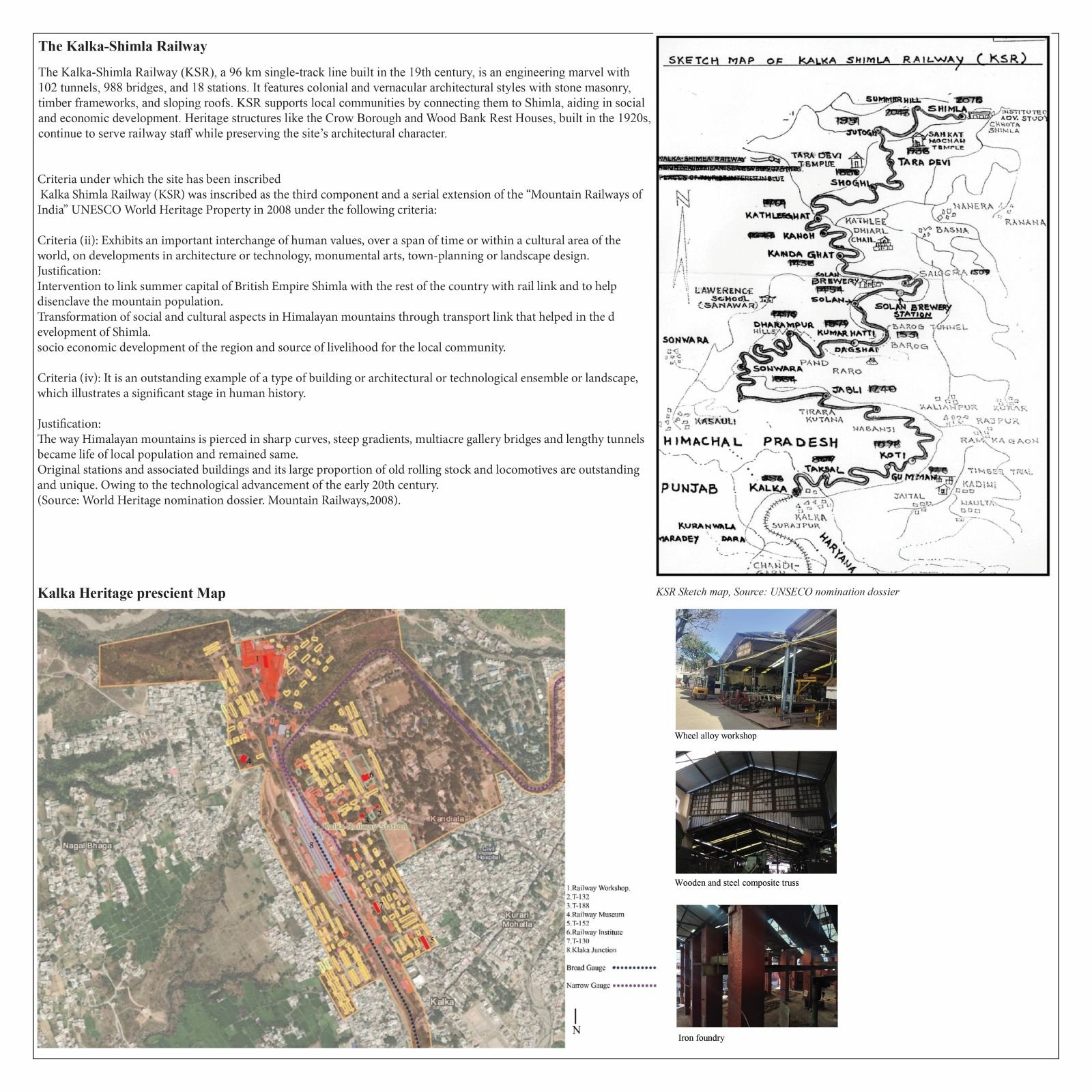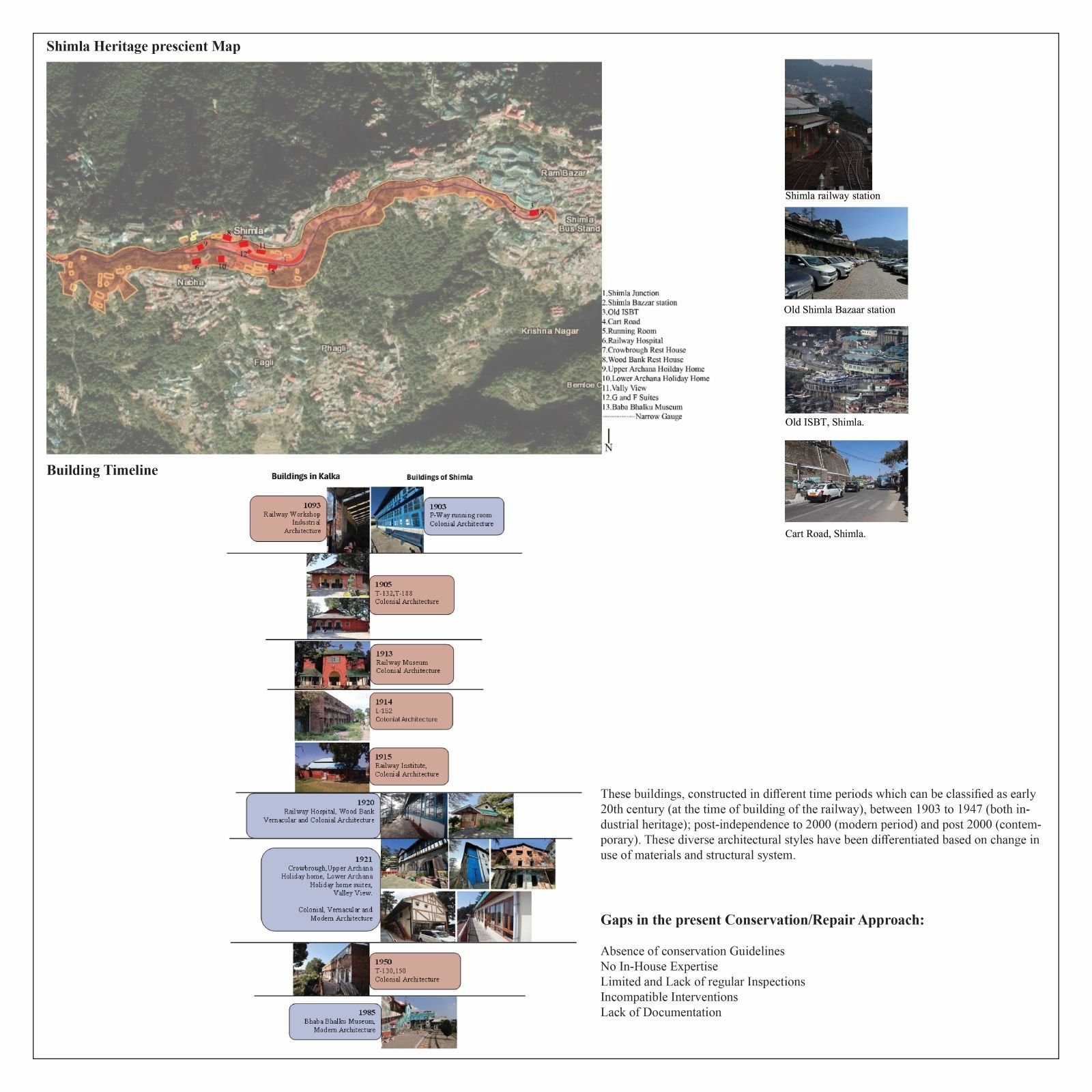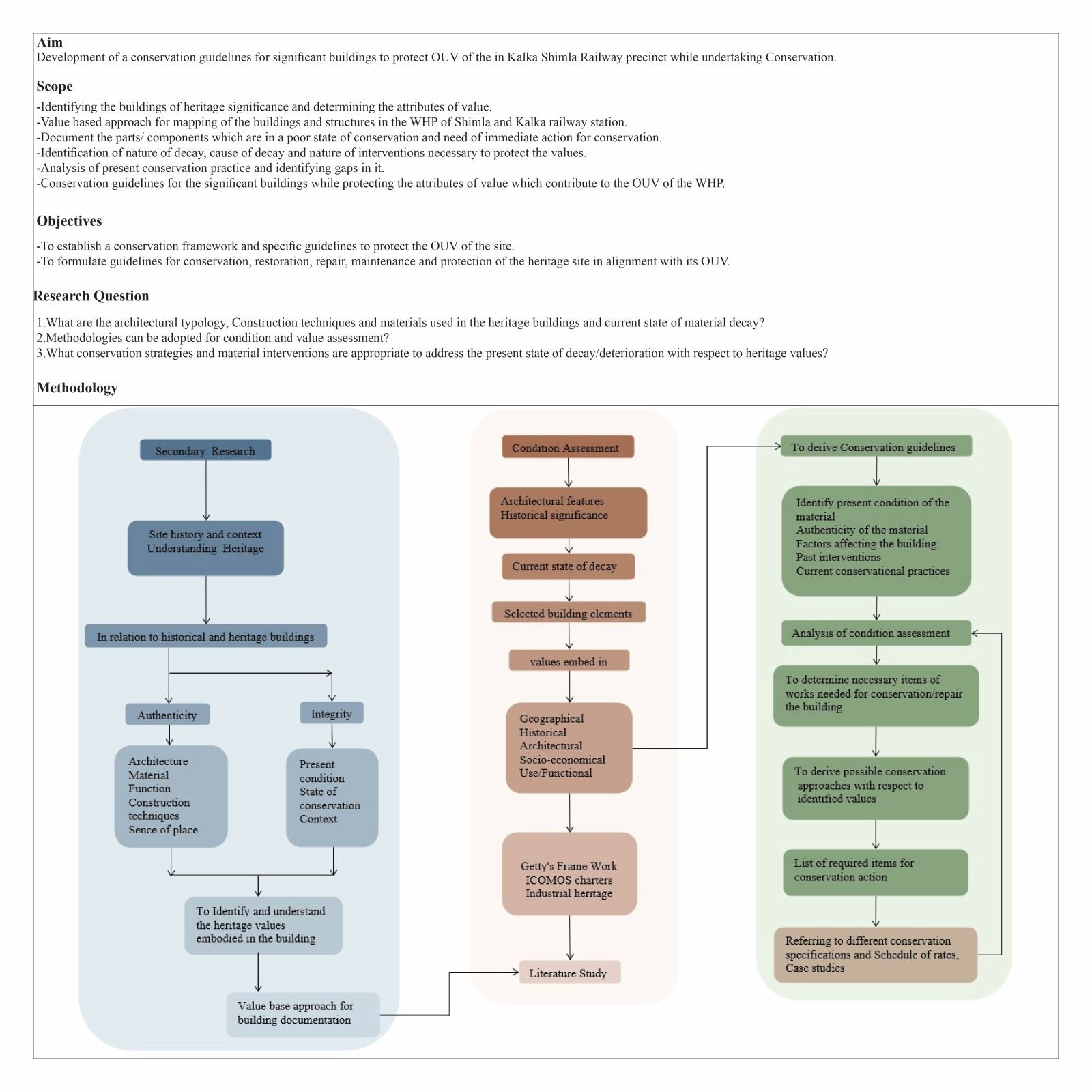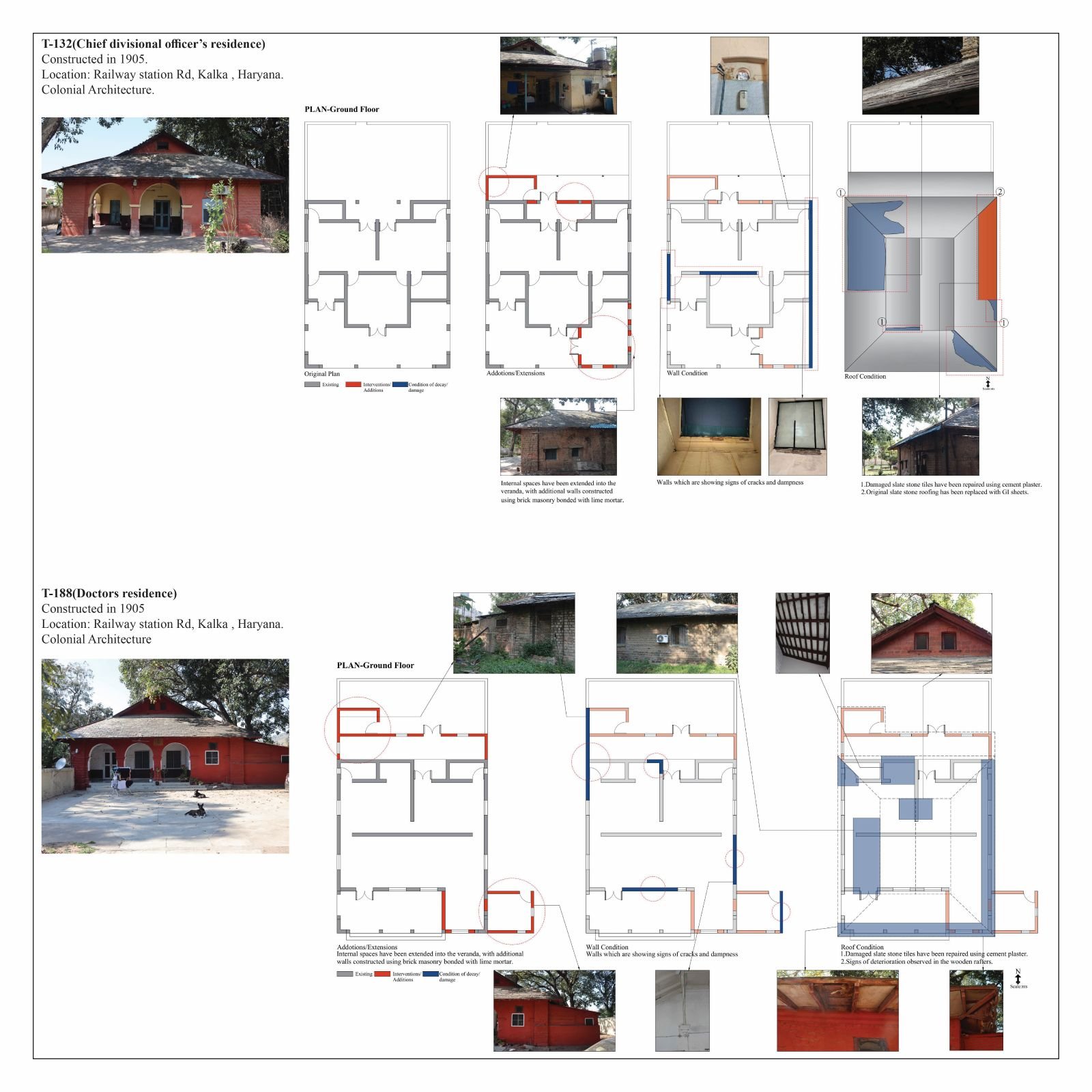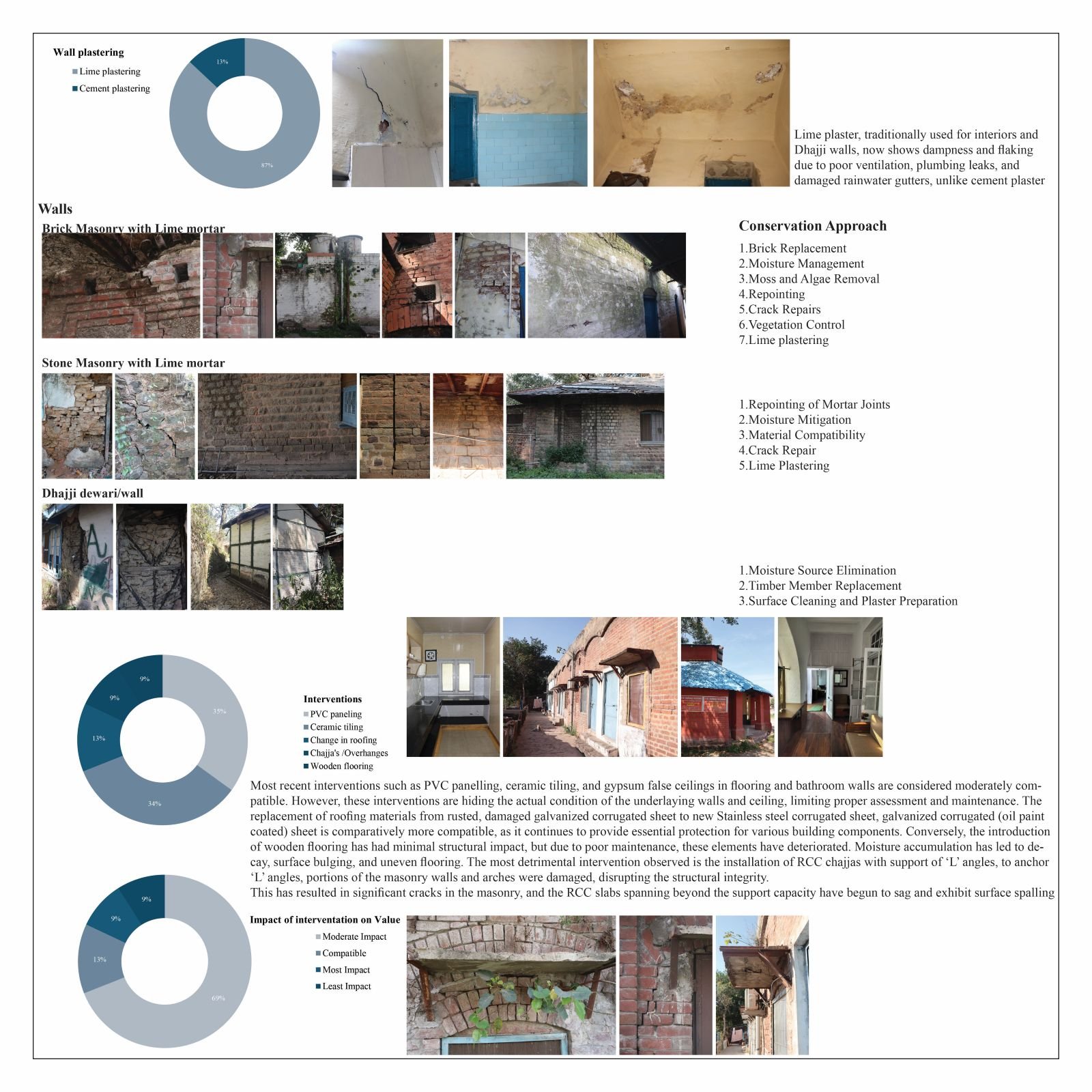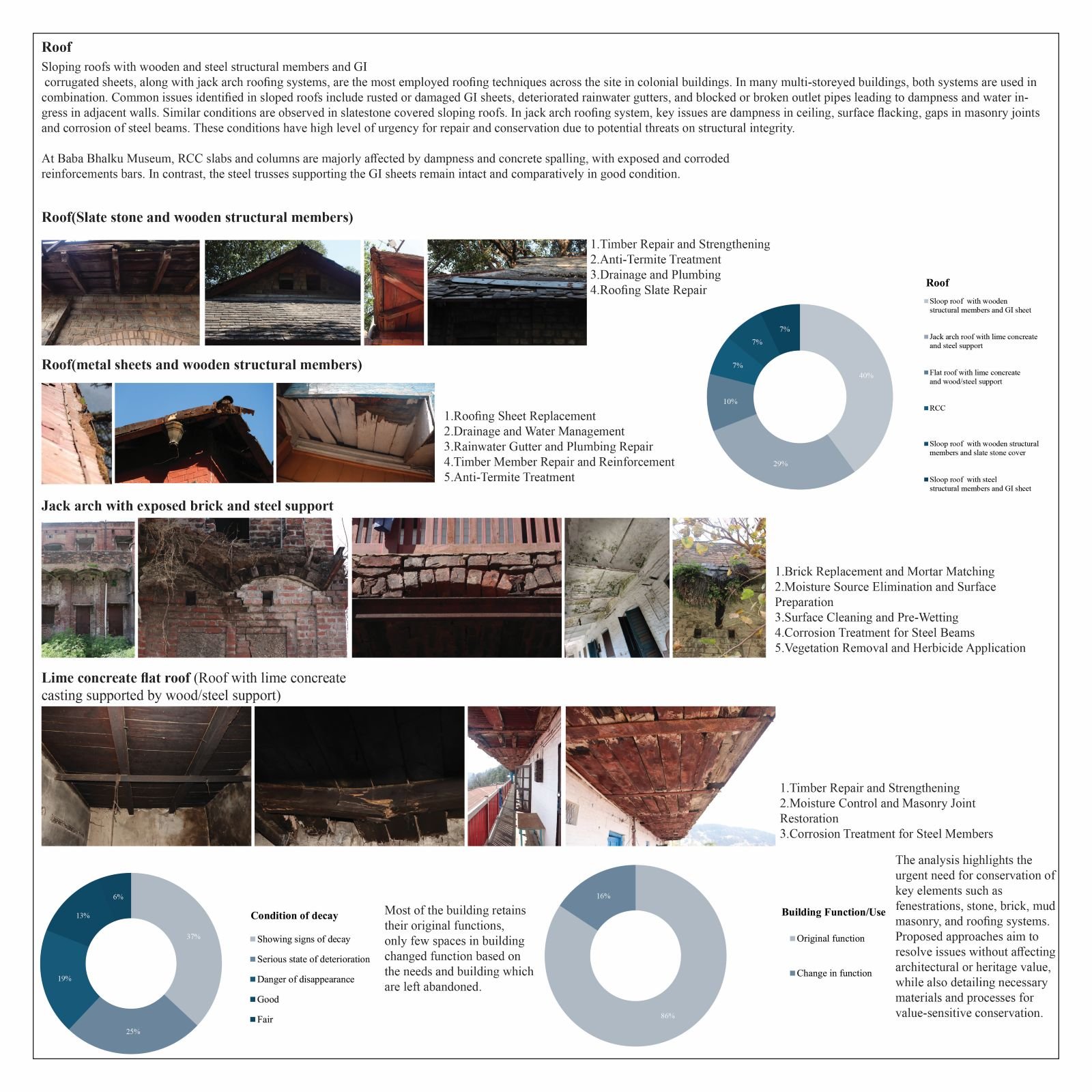Your browser is out-of-date!
For a richer surfing experience on our website, please update your browser. Update my browser now!
For a richer surfing experience on our website, please update your browser. Update my browser now!
The Kalka–Shimla Railway (KSR), a UNESCO World Heritage Property, comprises a range of historic structures rest houses, railway quarters, workshops, and staff bungalows built across different periods. While some of these buildings remain in active use, others face neglect, incompatible reuse, and material decay due to the absence of structured conservation guidelines and heritage-specific expertise. This research aims to develop conservation guidelines to protect the Outstanding Universal Value (OUV) of the Kalka and Shimla railway precinct. A value-based conservation approach is adopted, referencing frameworks, charter and case studies. The study involves mapping significant buildings by construction period, architectural features, and material use to assess heritage values and current conditions. Through detailed condition assessments and analysis of material vulnerabilities, the study identifies causes of decay and the nature of required interventions. It also highlights key gaps in current practices, such as incompatible repairs, lack of documentation, and limited inspection routines. The outcome of this research will be a Conservation guideline and a set of context-specific guidelines for repair, restoration, and adaptive reuse. These aim to support the railway authorities in preserving the integrity, authenticity, and architectural character of KSR’s built heritage while addressing contemporary functional needs.
